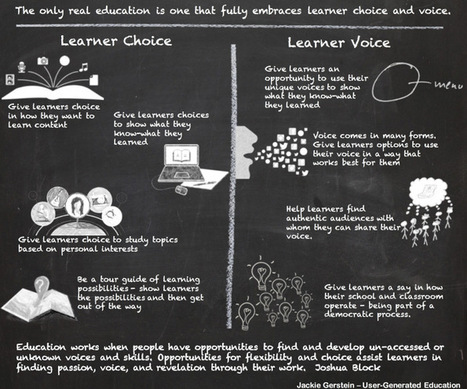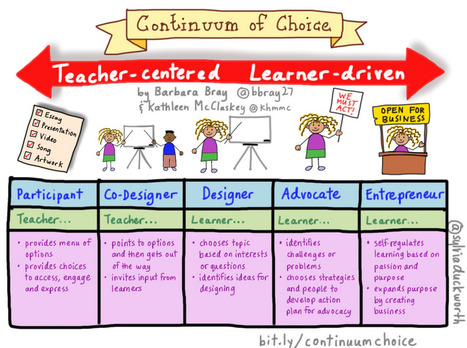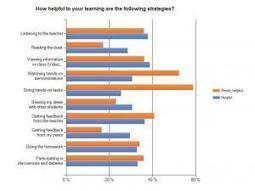Examples and ideas that illustrate the Continuum of Voice moving to agency through the Stages of Personalized Learning Environments.
Research and publish the best content.
Get Started for FREE
Sign up with Facebook Sign up with X
I don't have a Facebook or a X account
Already have an account: Login
What pathways are being designed in today's schools to personalize the learning experience?
Curated by
Kathleen McClaskey
 Your new post is loading... Your new post is loading...
 Your new post is loading... Your new post is loading...

Sharon Berman's curator insight,
August 10, 2015 7:51 PM
Jackie Gerstein shares her insight on how to give learner voice and choice in their learning. She believes that "All instructional practices in this era of learning should revolve around learner choice and voice."
What are your thoughts on learner voice and choice? 
Nancy White's curator insight,
August 11, 2015 11:41 AM
This is a great entry-point to begin making learning personal for each learner! 
Debra Walker's curator insight,
August 11, 2015 12:06 PM
learners of all ages can benefit with this model. |
|
















Voice gives learners a chance to share their opinions about something they believe in. We adapted the Continuum of Voice chart we used from Students at the Center in our post Learner Voice Demonstrates Commitment to Building Agency. The learning environment changes as you encourage voice and can see learners taking more control of their learning. We call this process the Stages of Personalized Learning Environments (PLE). - See more at: http://www.personalizelearning.com/2016/01/continuum-of-voice-what-it-means-for.html#sthash.kLBn5zQT.dpuf